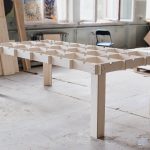Orthodontic braces – are they safe for our teeth?
The malocclusions of occlusion consist in abnormal construction of the jaws, which disturbs the function of the oral cavity, hinders correct pronunciation, causes tooth decay and periodontal disease, and of course in many people it causes aesthetic problems. Therefore, especially recently, more and more Poles, even elderly ones, have decided to receive orthodontic treatment.
Types of malocclusion
Depending on the position of the upper and lower teeth, orthodontists distinguish several types of malocclusions. One of the most common is overbite, which consists in retracting the lower dental arch in relation to the upper one. Since the front teeth are not in contact, the pronunciation of the syllable is difficult and resembles a jack. At an advanced stage, the face is disfigured by the backflow of the mandible and the collapse of the corners of the mouth, and there is often a defect manifesting itself in large gaps between the teeth, which is called the separated teeth. The opposite is true of crowding, where the teeth are too large in relation to the teeth, which results in them growing in inappropriate places and at various angles.
Construction and principle of operation
The main element of the device are locks, which are fixed to the teeth by means of appropriate glue. These locks are connected with each other by a wire, creating an arc, using the so-called ligatures. When the arch is properly stretched, the teeth move slowly and gradually, taking up the right place. The locks can be made of metal, which makes them very durable, or of brittle and delicate materials, but much less noticeable, such as crystal, acrylic, plastic or porcelain. The ligatures are flexible and can be selected in the colour of your choice. For detailed information on the types of braces, please refer to the article “Orthodontic braces – types”.
Are orthodontic braces safe for our teeth?
Undoubtedly, the treatment of malocclusion with orthodontic braces is one of the least invasive methods. The treatment process is long and under the strict control of a specialist doctor. Each instrument, in order to produce the desired effect, is made individually for a given patient, after prior, thorough examination. Treatment of occlusion defects is long-term, but completely safe for the teeth, if the patient follows the doctor’s recommendations. This includes thorough cleaning of the teeth, especially around the brackets, to prevent food from accumulating on them, as this could lead to tooth decay.
Choosing the right orthodontist
It is important to find the right experienced specialist with the right reputation among your customers. Internet portals, which provide offers of many proven, good clinics all over the country, are a great convenience. Thanks to them you can read patient opinions, compare prices and even make an appointment for a preliminary meeting.
The earlier a treatment starts, the shorter it will take and the more effective it will be. All this will ensure a good orthodontist in the city.
Extraneous material











